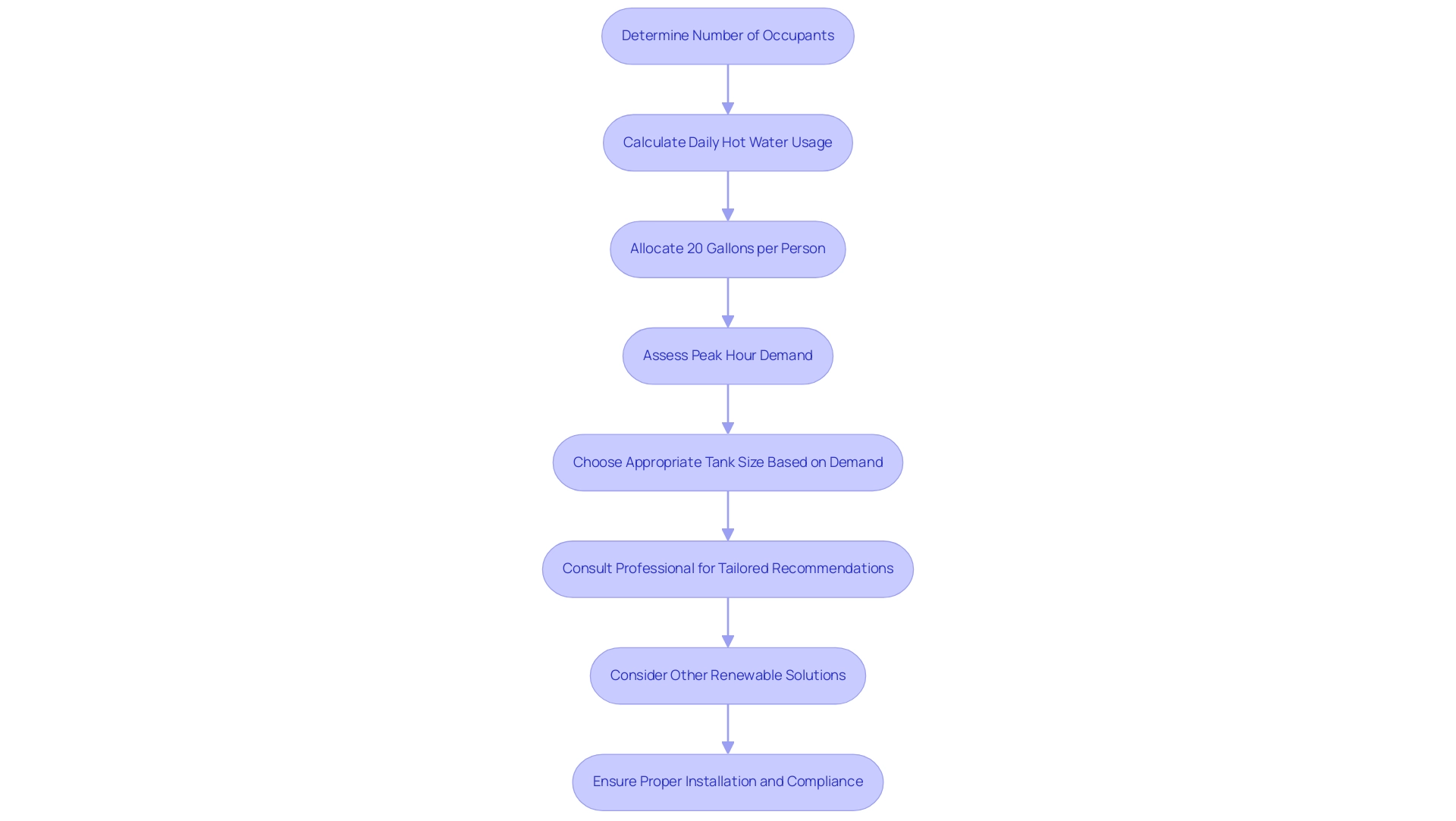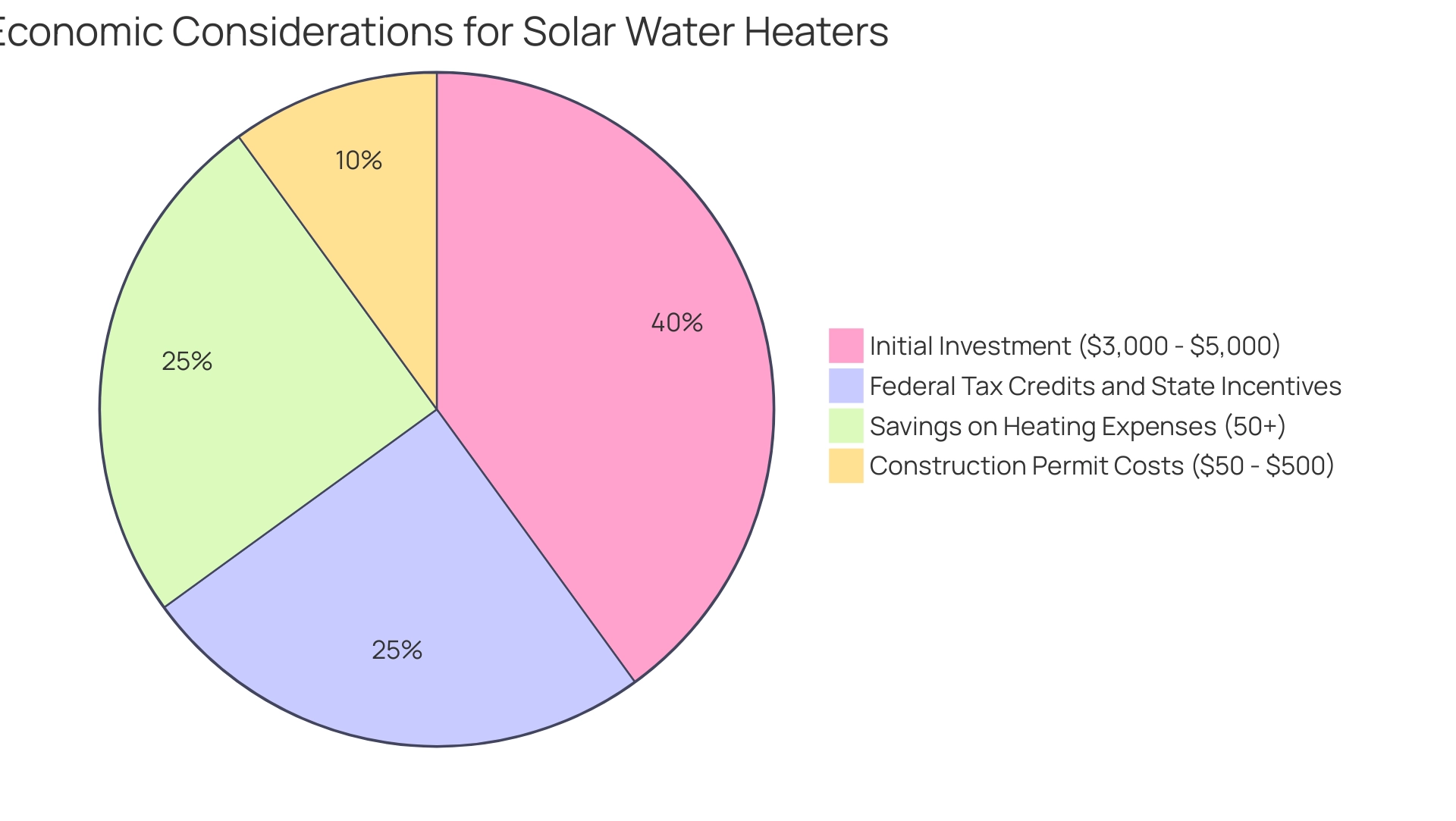Introduction
Harnessing the sun’s energy to heat water is not just a smart choice for the environment; it’s a savvy investment for homeowners looking to cut costs and boost sustainability.
Solar water heaters offer an innovative solution that taps into renewable energy, providing hot water while significantly lowering utility bills and reducing carbon footprints. With a growing market and a variety of options available—from active systems that utilize pumps for maximum efficiency to passive systems that capitalize on natural convection—there’s a solar solution for every home.
Understanding how these systems work, their benefits, and the essential maintenance practices can empower homeowners to make informed decisions that enhance both their comfort and their commitment to a greener future.
Whether considering installation or simply exploring the potential savings, diving into the world of solar water heating opens up a wealth of opportunities for sustainable living.
Introduction to Solar Water Heaters: Functionality and Benefits
Solar heating systems harness the power of the sun to supply hot liquid for your home, making them an excellent investment for eco-conscious homeowners. These setups utilize solar water tanks with collectors that effectively capture sunlight, heating the liquid stored for your needs. By transitioning to renewable energy, you can enjoy lower energy bills and a reduced carbon footprint, significantly enhancing your sustainability efforts.
The global market for solar water tanks is projected to grow steadily, with a compound annual growth rate (CAGR) of 6.00% from 2024 to 2031. Notably, flat plate collectors are becoming a popular choice due to their adaptability across various climates, while evacuated tube collectors are gaining traction, particularly in colder regions where they excel in efficiency.
For instance, a household in Southern California saw over a 70% decrease in energy expenses after installing a water heating setup. This not only resulted in substantial savings but also reduced their carbon emissions significantly. When examining solar technology, it’s essential to understand the two main types of solar water tanks: active and passive models.
- Active setups use pumps and controls to circulate heat transfer fluids, making them suitable for homes requiring consistent heating.
- Passive approaches rely on building design, such as south-facing windows and thermal mass walls, to optimize heat absorption without mechanical devices.
Installation considerations also play a crucial role; active setups generally involve more complex installations and higher upfront costs, while passive approaches are simpler and less costly to install. Additionally, factors such as your roof’s angle and condition can impact the efficiency of these systems. If you’re contemplating renewable energy technology, keep in mind that the practical advantages of thermal systems go beyond simple monetary savings.
They lessen our reliance on fossil fuels, paving the way for a cleaner energy future. As you explore your options, investing in renewable energy technology enhances your home’s energy independence while contributing to a healthier planet. It’s truly a win-win for both your wallet and the environment!
Exploring Different Types of Solar Water Heaters: Active vs. Passive
When selecting a thermal device for heating, grasping the distinctions between active and passive setups can significantly impact environmentally aware homeowners. Active thermal systems utilize the energy of pumps and controls to circulate fluid, enabling them to function exceptionally well, even in cooler climates. These systems often feature flat-plate collectors or evacuated tube collectors that maximize heat absorption, thereby promoting energy efficiency.
In contrast, passive thermal water systems take a simpler approach, relying on natural convection to circulate water, which typically makes them easier and less costly to install. Combining sunlight collectors with heat exchangers can further improve efficiency, ensuring that homeowners maximize their investment in renewable energy.
While active setups boast higher efficiency, particularly in demanding weather conditions, passive alternatives shine in terms of reliability and low maintenance needs. As Saleem Raza Samo, a respected professor and dean in the field of engineering, states, “It was concluded that active solar heating is suitable for the domestic sector and hoped that solar heater source renewable energy will have a positive impact reducing electrical energy consumption.” This highlights the significant benefits of active setups, especially considering that Model B incurs an additional cost of $85 but offers estimated annual operating cost savings of $56, resulting in a payback period of just 1.5 years.
For homeowners, the choice between these two options often comes down to personal circumstances: your local climate, budget, and specific hot water needs should all influence your decision. With the majority of thermosyphon setups offering a 40-gallon capacity, there are options to suit various household demands. Furthermore, passive renewable energy setups offer an economical solution that demands little upkeep, utilizing natural characteristics to efficiently gather and retain sunlight heat.
Ultimately, whether you lean towards the efficiency of active systems or the simplicity of passive ones, making the right choice can lead to significant energy savings and a more sustainable home. Embracing renewable heating not only benefits your wallet but also contributes to a healthier planet, promoting a sustainable lifestyle for generations to come. To learn more about how renewable heating can align with your long-term sustainability goals and to explore tailored solutions, contact Powercore Electric Inc. today!
Essential Maintenance Practices for Solar Water Heating Systems
To keep your solar water heater running smoothly, it’s essential to establish a regular maintenance routine. Start by checking for any leaks or cracks in the collectors and pipes—these can significantly impact efficiency. Additionally, inspect the solar water tanks for cracks, leaks, and corrosion, and remember to flush sediment periodically to maintain optimal performance.
Cleaning the collectors several times annually is essential for maximizing sunlight absorption, ensuring your setup operates at its best. Various cleaning services are available, ranging from professional cleaning companies that use specialized equipment to innovative robotic cleaners that can automate the process. Don’t forget to inspect the insulation on your pipes; proper insulation helps prevent heat loss, which can save you money over time.
Also, take a moment to check the pressure relief valve to confirm it’s functioning correctly. If your setup utilizes antifreeze, remember to monitor its levels at least once a year to avoid any freezing issues. Furthermore, ensure that the collectors and piping slope a minimum of 0.25 inches per foot for complete drainage, which is vital for preventing damage during freezing temperatures.
As Martin Holladay, GBA Editor, observes,
The factor you mention increases the expense of these setups, and also contributes to their upkeep costs — in sharp contrast to PV installations, which are much simpler and less susceptible to maintenance issues.
By prioritizing regular upkeep of your heating system, including solar water tanks and utilizing innovative cleaning solutions or experts, you not only enhance efficiency but also prolong its lifespan, resulting in considerable yearly cost savings—approximately $274.46 for electric heating. Findings from the thorough assessment of heating installations suggest that although these setups can fulfill heating requirements in summer, adequate upkeep is essential for realizing energy savings and emission reductions year-round.
Following these straightforward measures can maintain your setup in excellent condition, guaranteeing you experience the advantages of pure, effective hot liquid throughout the year, all while making a positive impact on our environment.
Sizing Your Solar Water Tank: Key Considerations
Sizing your solar water tanks is a crucial step in ensuring that your system meets your household’s hot needs efficiently while contributing to long-term sustainability. Start by considering essential factors such as the number of occupants in your home and your daily hot usage. A great rule of thumb is to allocate about 20 gallons of storage for each person in your household.
For instance, if you have a family of four, aiming for a tank that holds around 80 gallons is a smart choice. Additionally, it’s important to account for peak demand hours—these are the times when your household will require the most hot supply. Based on a worksheet example, a total peak hour demand of 66 gallons suggests that a heating unit model with a first-hour rating of 66 gallons or higher would be ideal.
As Roger Abdo indicates, an oversized thermal storage tank that permits a temperature rise of less than 10°F is essentially ineffective, emphasizing the significance of appropriate sizing to prevent common errors. Correctly sized heating systems, including solar water tanks, not only satisfy your hot supply requirements but also improve energy efficiency, resulting in substantial financial advantages through decreased energy expenses. To ensure that your system is perfectly sized for your unique situation, consulting with a professional can provide tailored recommendations that consider local climate conditions and specific usage patterns.
Additionally, combining thermal heating with other renewable solutions, such as Tesla home chargers and photovoltaic panels, can optimize your home’s energy efficiency. Additionally, exploring government programs that offer incentives for solar installations can further enhance the financial viability of your investment. Proper installation and space considerations are essential; adhering to installation guidelines and ensuring compliance with local codes can prevent accidents and prolong the lifespan of your hot tank.
Precise calculations are crucial to choose solar water tanks that effectively satisfy your household requirements, ultimately resulting in improved energy efficiency and environmental advantages for you as a homeowner.
Economic Considerations: Costs, Incentives, and Savings from Solar Water Heaters
The primary investment for a thermal system generally falls between $3,000 and $5,000, affected by elements such as the kind of system and the difficulty of setup. Homeowners should also consider construction permit costs, which can range from $50 to $500, as these fees contribute to the overall investment. However, many homeowners can take advantage of federal tax credits and state incentives, which can significantly lower those upfront costs.
Surprisingly, thermal systems can result in savings frequently surpassing 50% on heating expenses, enabling homeowners to recover their investment gradually. According to HomeAdvisor, the cost data is based on actual project costs reported by 33,501 HomeAdvisor members, enhancing the credibility of these figures. As you investigate this choice, it’s essential to examine local utility incentives, as these can further improve the financial feasibility of a heating system.
Additionally, considering the integration of photovoltaic systems with other energy-efficient solutions, such as Tesla home chargers, can amplify both economic and environmental benefits. It’s worth noting that gas and propane water heaters require additional venting systems, which can increase installation costs by $300 to $600. Investing in solar not only benefits your wallet but also contributes positively to the environment, aligning with your eco-conscious lifestyle.
Conclusion
Harnessing the power of solar water heaters presents a remarkable opportunity for homeowners to embrace sustainability while enjoying significant cost savings. By understanding the functionality and benefits of both active and passive systems, individuals can make informed choices that align with their specific needs and local conditions. With the potential for energy expenses to decrease by over 50%, the financial incentives are compelling, especially when considering available tax credits and local utility programs.
Regular maintenance practices are essential to ensure these systems operate at peak efficiency, prolonging their lifespan and maximizing returns on investment. Simple steps such as:
- Checking for leaks
- Cleaning collectors
- Monitoring insulation
can lead to substantial savings and a reliable supply of hot water throughout the year.
Moreover, sizing the solar water tank correctly is crucial for meeting daily hot water demands efficiently. By consulting professionals and considering personal usage patterns, homeowners can optimize their systems for both comfort and energy efficiency. Ultimately, investing in solar water heating not only enhances energy independence but also plays a vital role in reducing carbon footprints, paving the way for a cleaner, greener future. Embracing this technology is not just a step towards personal savings; it’s a commitment to a sustainable lifestyle that benefits the entire planet.





